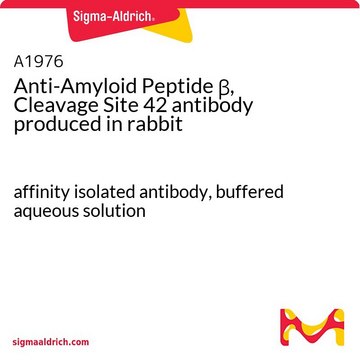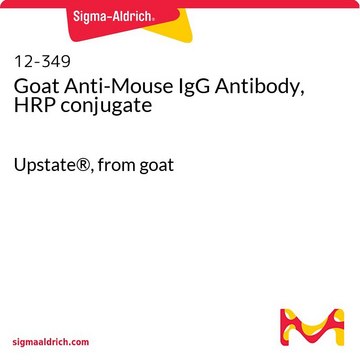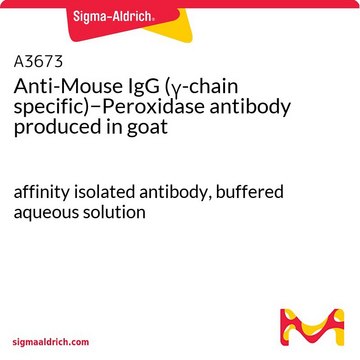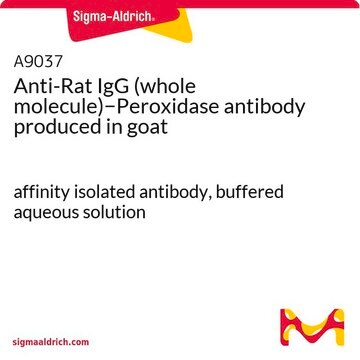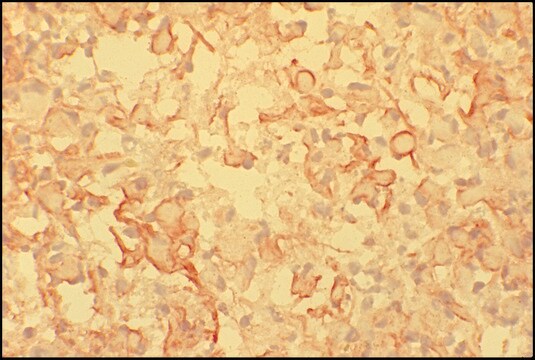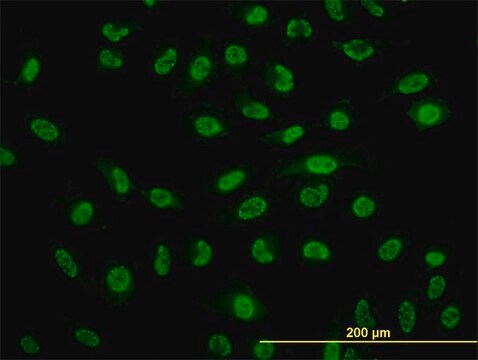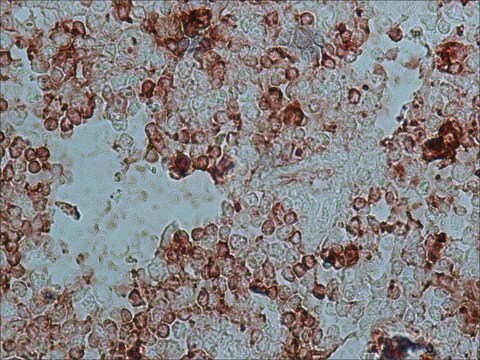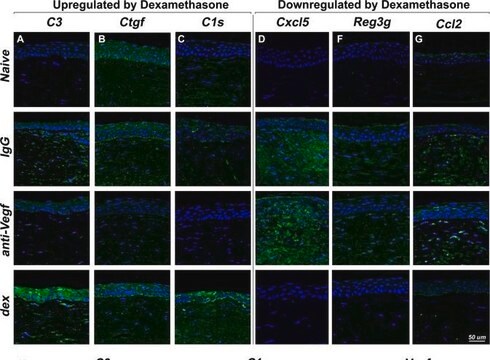A4416
Anti-Mouse IgG (whole molecule)–Peroxidase antibody produced in goat
affinity isolated antibody, buffered aqueous solution
Synonym(s):
Anti Mouse Hrp Sigma
Sign Into View Organizational & Contract Pricing
All Photos(4)
About This Item
Recommended Products
biological source
goat
conjugate
peroxidase conjugate
antibody form
affinity isolated antibody
antibody product type
secondary antibodies
clone
polyclonal
form
buffered aqueous solution
species reactivity
mouse
technique(s)
direct ELISA: 1:10,000
application(s)
research pathology
shipped in
dry ice
storage temp.
−20°C
target post-translational modification
unmodified
Looking for similar products? Visit Product Comparison Guide
General description
Immunoglobulin G (IgG) is a glycoprotein antibody that regulates immune responses such as phagocytosis and is also involved in the development of autoimmune diseases. Mouse IgGs have four distinct isotypes, namely, IgG1, IgG2a, IgG2b, and IgG3. IgG1 regulates complement fixation in mice. Anti-Mouse IgG (whole molecule)-Peroxidase antibody is specific for mouse IgGs.
Immunogen
Purified mouse IgG
Application
Anti-Mouse IgG (whole molecule)-Peroxidase antibody is suitable for use in immunoblot (1:2000). The product can also be used for direct ELISA: 1:10,000.
Western blot analysis of transfected Hela cell lysates was performed using HRP conjugated goat anti-mouse IgG as the secondary at a dilution of 1:4000.
Physical form
Solution in 0.01 M phosphate buffered saline, pH 7.4 containing 1% bovine serum albumin with preservative.
Preparation Note
Prepared using the periodate method described by Wilson, M.B., and Nakane, P.K., in Immunofluorescence and Related Staining Techniques, Elsevier/North Holland Biomedical Press, Amsterdam, p215 (1978).
Disclaimer
Unless otherwise stated in our catalog or other company documentation accompanying the product(s), our products are intended for research use only and are not to be used for any other purpose, which includes but is not limited to, unauthorized commercial uses, in vitro diagnostic uses, ex vivo or in vivo therapeutic uses or any type of consumption or application to humans or animals.
Not finding the right product?
Try our Product Selector Tool.
Signal Word
Warning
Hazard Statements
Precautionary Statements
Hazard Classifications
Aquatic Chronic 3 - Skin Sens. 1
Storage Class Code
12 - Non Combustible Liquids
WGK
WGK 2
Flash Point(F)
Not applicable
Flash Point(C)
Not applicable
Choose from one of the most recent versions:
Already Own This Product?
Find documentation for the products that you have recently purchased in the Document Library.
Customers Also Viewed
Damien Laporte et al.
The Journal of cell biology, 192(6), 1005-1021 (2011-03-23)
The contractile ring is essential for cytokinesis in most fungal and animal cells. In fission yeast, cytokinesis nodes are precursors of the contractile ring and mark the future cleavage site. However, their assembly and architecture have not been well described.
Lorenzo K Love et al.
Journal of applied physiology (Bethesda, Md. : 1985), 111(2), 427-434 (2011-05-21)
Pyruvate dehydrogenase (PDH) is a mitochondrial enzyme responsible for regulating the conversion of pyruvate to acetyl-CoA for use in the tricarboxylic acid cycle. PDH is regulated through phosphorylation and inactivation by PDH kinase (PDK) and dephosphorylation and activation by PDH
Huaqi Xiong et al.
The Journal of neuroscience : the official journal of the Society for Neuroscience, 29(17), 5463-5475 (2009-05-01)
Alzheimer's disease (AD) is characterized by accumulation and deposition of Abeta peptides in the brain. Abeta deposition in cerebrovessels occurs in many AD patients and results in cerebral amyloid angiopathy (AD/CAA). Since Abeta can be transported across blood-brain barrier (BBB)
Helen J Renaud et al.
Toxicological sciences : an official journal of the Society of Toxicology, 124(2), 261-277 (2011-09-17)
Cytochrome P450 (Cyp) enzymes from the first four families (Cyp1-4) play a major role in metabolizing xenobiotics, affecting drug pharmacokinetics and chemical-induced toxicity. Due to cloning of the mouse genome, many novel Cyp isoforms have been identified, but their tissue
F F Hsieh et al.
Blood, 96(8), 2746-2754 (2000-10-07)
Progression through the mammalian cell cycle is regulated by cyclins, cyclin- dependent kinases (CDKs), and cyclin-dependent kinase inhibitors (CKIs). The function of these proteins in the irreversible growth arrest associated with terminally differentiated cells is largely unknown. The function of
Our team of scientists has experience in all areas of research including Life Science, Material Science, Chemical Synthesis, Chromatography, Analytical and many others.
Contact Technical Service




